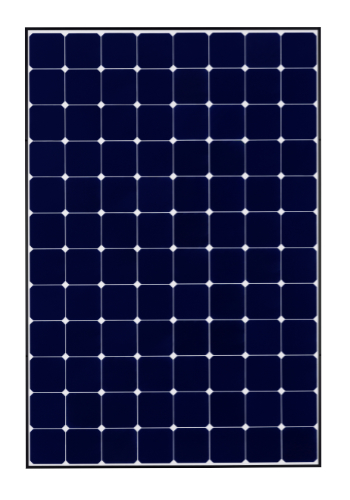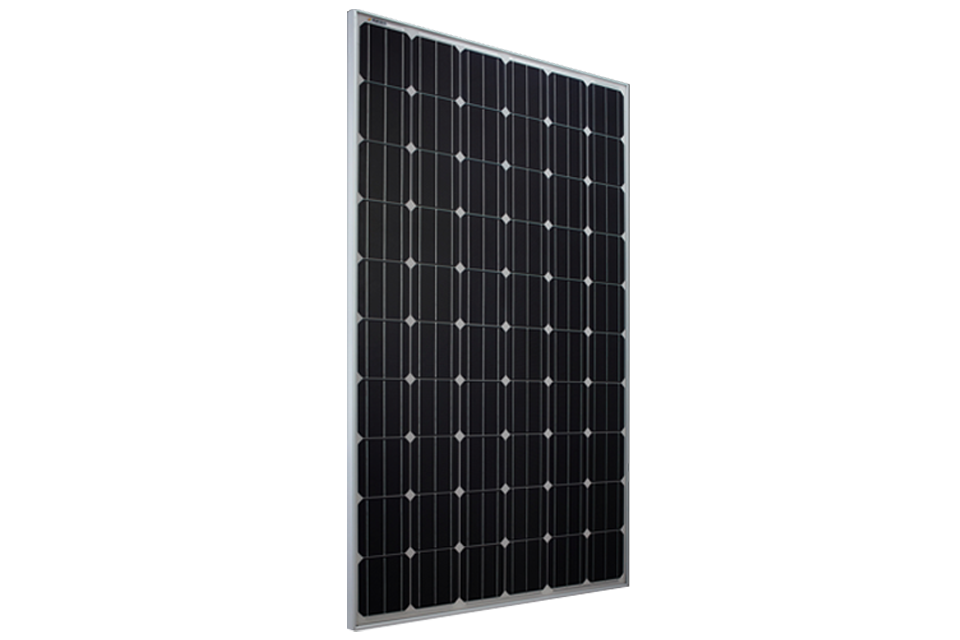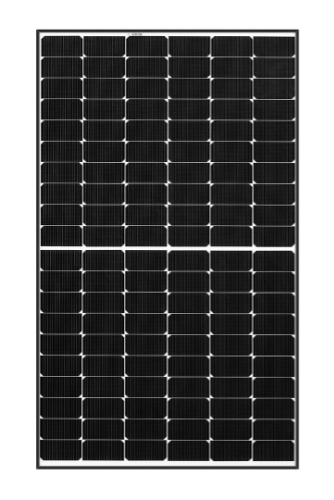REC, Sunpower, and LG make the most efficient solar panels for home installations
Not all solar panels are created equal. While standard-quality panels are generally able to convert about 18% of the sunlight that hits the panel into usable electricity, the most efficient solar panels bump that number all the way up to 21% or more. On your rooftop, this means your installation can produce more electricity from the same amount of space.
Depending on the quality of the panel and the technology inside, solar panel efficiency can range anywhere between 16% and 22%. Those 6 percentage points might not seem like a major difference, but you’d be wrong. A solar panel that is 22% efficient can produce 38% more energy than a panel that is 16% efficient! However, you need to balance efficiency with cost, and an installer can help you do that.
Let’s take a look at the most efficient solar panels on the market in 2019. After that, we’ll see whether installing high-efficiency panels on your own roof makes financial sense.
Most Efficient Solar Panels
Here are the five most efficient solar panels on the market as of late 2019. To create our list, we limited ourselves to solar panels for residential use and focused on the efficiency of the entire solar panel, not just the efficiency of the individual cells inside (more on that later).
- REC Alpha Series: 21.7% panel efficiency
- Sunpower X-Series: 21.5%
- LG NeON R: 21.1%
- Upsolar 6” Mono: 20.6%
- Canadian Solar HiDM: 20.46%
Most of these solar panels use special materials and design behind the silicon (the blue square you can see on the panels) to increase the efficiency of the solar cells.
Most standard-quality solar cells use an aluminum paste in front of and behind the silicon wafer to collect all the electricity. However, there are more efficient solutions. Sunpower and LG use interdigitated back contact (IBC) cells, while Canadian Solar uses passivated emitter and rear contact (PERC) technology.
Avoiding too much technical talk, PERC and IBC cells simply push the efficiency of the panels about one percentage point higher. Both of these technologies are still nascent, but PERC specifically is so promising that it is set to make up the majority of the solar panel market by the early 2021s.
Let’s now take a look at each of these to see what sets them apart.
1. REC Solar Alpha Series
When Norwegian panel manufacturer REC (not to be confused with American solar installer REC Solar, which is a completely different company) introduced its newest solar panels at Germany’s Intersolar conference in May 2019, it was a very big deal. Sunpower, which had held the record for most efficient solar panel for years (see below), had finally been outdone.
REC’s Alpha Series of panels boast a max efficiency of 21.7%, just barely eeking out a higher efficiency than Sunpower’s top-of-the-line X-Series. REC’s panels only produce less than 1% more energy than Sunpower’s panels – not a huge difference – but enough to make it the world’s most efficient commercially-available solar panel.
The Alpha Series comes in five different models, ranging from 360 to 380 watts, with a minimum efficiency of 20.6% for the lowest wattage all the way up to the record-breaking 21.7% for the highest wattage.
While most solar panels for homes are composed of 60 rectangular solar cells, REC’s Alpha Series panels are made of 120 cells cut in half, a relatively new technique in the solar industry known as half-cells. It’s this half-cell technology that helped REC build this incredibly efficient solar panel.
Cutting solar cells in half decreases energy loss and increases durability. This means REC panels can squeeze out more energy from the outset as well as over its entire lifetime. While half-cell technology is still nascent in 2019, some expect it to make up over 40% of the solar market within the next decade.
REC’s Alpha Series come with a 20-year product warranty, which is longer than most standard panels (which typically include a 10 to 12 year warranty). But it’s not as impressive as the Sunpower warranty below, which lasts for a full 25 years.
However, the company does guarantee the Alpha Series panels to produce 92% of its nameplate wattage after 25 years, which is one of the highest in the industry.
Overall, the REC Alpha Series’ unique cell design has allowed it to be the most efficient panel in the world. However, you can find a better warranty from the Sunpower panels below.
2. Sunpower X-Series

Sunpower has dominated the high-efficiency solar market for years, thanks to its line of X-Series residential solar panels, which boasts a max of 21.5% efficiency. While other companies have just recently reached that level, Sunpower first introduced this series all the way back in 2013, so you know they have the experience and knowledge to build an excellent panel.
The X-Series comes in just two model sizes: a 335 watt and 345 watt. Sunpower uses what’s called interdigitated back contact (or IBC) solar cells. Sunpower calls this its Maxeon technology and they’re one of only two manufacturers we’re aware of that are using IBC technology (LG below also uses it).
In an IBC cell, all the electrical connections behind the silicon (the blue squares which absorb and convert the sunlight) are extra beefy and therefore suffer lower energy losses. The company builds their solar panels on a solid layer of copper, as opposed to most panels which have four metal strips running below the panel. Thanks to the unique design, IBC solar cells are more efficient and more durable than standard solar cells.
In fact, in a durability test of eight different solar panels at Germany’s esteemed Fraunhofer research institute, Sunpower’s panels ranked highest. And the company’s offers an incredible 25-year manufacturer’s warranty – twice as long as most solar manufacturers. They also guarantee the panels will produce 92% of its nameplate power after 25 years, which is on par with REC’s Alpha Series above.
An important note: Sunpower likes to boast that their solar panels are 22.8% efficient, but that’s slightly misleading. Sunpower’s solar panels contain solar cells that are 22.8% efficient. However, the actual panels – which are composed of 60 solar cells and all the electrical connections and wiring – actually boast a max of 21.5%. That’s still incredibly efficient, but knowing the difference between cell and panel efficiency is important.
Overall, Sunpower is still the queen of the premium panel, thanks to its incredible efficiency, long-term warranties, and well-known name.
3. LG NeON R
You’re probably already familiar with the South Korean brand LG, which also makes batteries and cell phones.
LG’s top-of-the-line NeON R panels boast very similar specs to the Sunpower X-Series above. LG’s panels boast a max efficiency of 21.1%, so they produce about 2% less electricity than the Sunpower panels. Along with Sunpower, LG is also one of the only manufacturers to use solar cells with interdigitated back contacts (or IBC). Most solar panels have thin metal strips behind the silicon to collect all the electricity produced, but IBC cells are much beefier and more efficient, which allows solar panels to produce more electricity at any given time.
The NeON R comes in four different sizes, with wattage ranging between 350 and 365 watts. LG offers a 25-year manufacturing warranty on the NeON R panels, just like Sunpower. However, the panels fall behind when comparing production guarantees. LG guarantees the NeON R panels will produce 88.4% of their initial power after 25 years. That’s higher than the 80% to 81% that comes with most ‘standard’ panels, but far below the 92% guarantee that both Sunpower and REC offer.
Still, LG is a well-respected company that’s been in the solar panel industry for decades, so its solar panels are top-notch and come at a lower price than other high-efficiency panels. Both Sunrun and Vivint Solar also install LG’s excellent RESU battery, so the company is well trenched in the solar market.
4. Upsolar 6” Mono Series

You’ve probably never heard of Chinese solar panel manufacturer Upsolar, but they’re growing in popularity. Founded in 2006, the company has manufacturing facilities across the globe, including in the US.The company’s high-efficiency 6” Mono Series boast a max efficiency of 20.6%, which lands them a solid fourth on our list. The Mono Series actually includes six different models, from 315 watts up to 340 watts, with a minimum efficiency of 19.1% for the lowest wattage and a max of 20.6%.
Upsolar offers a 12-year product guarantee for the panels, which is pretty standard in the solar industry, though far behind LG, Sunpower, and REC’s 25-year warranty. Their production guarantee is also pretty standard, at 80.7% of its nameplate rating by the end of 25 years. That’s on-par with most solar panels, but far below Sunpower and REC above.
Upsolar is known to offer a good value for their products and these high-efficiency panels are no different. They offer world-class efficiency at a lower price than others on our list. However, that lower costs comes with a shorter warranty and less brand recognition. However, if you’re looking for the most cost-effective solar installation (read that as: lowest cost and highest energy production), Upsolar’s panels could be a good option.
5. Canadian Solar
Last on our list is Canadian Solar’s HiDM panels. The HiDM panels boast efficiency up to 20.46%, thanks to a burgeoning solar technology called PERC (Passivated Emitter and Rear Contact). Like Sunpower and LG’s IBC solar cells, PERC technology creates a more efficient solar cell architecture, which in turn allows solar panels to produce more electricity.
The HiDM panels come in six different wattages, from 320 watts to 345 watts, with a minimum efficiency of 18.98% and a max of 20.46%.
Canadian Solar is known for making high-quality, durable panels at very good prices. Their panels typically can handle greater snow loads as well, so they’re perfect for areas with extreme winter weather. To make these low prices, Canadian Solar manufactures most of its panels in China and it offers only a 10-year product warranty, the shortest on our list.
It’s 25-year production guarantee is also lower than the more premium panels on our list. Canadian Solar guarantees its panels will produce 80.7% of their nameplate rating after 25 years, the same as Upsolar above.
Still, Canadian Solar is one of the largest panel manufacturers in the world and their products are installed on thousands of homes in the US.
Solar Cell Efficiency vs Solar Panel Efficiency
When you’re trying to compare the efficiency of different solar panels, it’s important to know the difference between cell efficiency and panel efficiency. Solar cells actually convert the sunlight into usable electricity. Solar panels are simply a collection of these cells, so they’re easier to install and use. A residential solar panel typically has 60 solar cells embedded in it. You can actually see the individual cells, which look like blue squares, in most panels.
For this article, we’ve focused on the efficiency of the entire solar panel, not just a singular solar cell inside the panel and which see higher efficiency levels. For example, Sunpower boasts that its X-Series panels are 22.8% efficient. However, this is at the cell level. At the module level, that efficiency drops to 21% to 21.5%. That’s still incredibly efficient, but it’s important to know the difference.
Residential solar panels are all about the same size (roughly 3ft x 5ft) and generally include 60 solar cells, so if a solar panel can produce more electricity at one time, it’s generally because the solar cells are more efficient at converting sunlight to electricity.
Standard Panels Are Generally the Best Investment
It’s exciting to read about the latest technological breakthroughs and all the high-efficiency panels, but the simple fact is that most homes don’t need expensive, high-efficiency solar panels.
High-efficiency solar panels can produce more electricity than standard options, but they also cost more as well. So you need to do the math to make sure these expensive panels produce enough additional electricity over their lifetime to justify the high purchase price. Typically, the math just doesn’t add up for most homeowners.
Because higher-efficiency panels produce more electricity, you need fewer panels to meet your energy needs. As such, there are certain situations where high-efficiency panels could make sense. If you live in a home with limited roof space, for example, high-efficiency panels would allow you to produce more electricity with that small space.
Most homeowners though have plenty of space to install a few additional solar panels, so standard quality panels typically make more sense financially.
Of course, if you’re looking for higher energy production as well as a better warranty or durability, many of these high-efficiency panels also include these as well. The solar panels from Sunpower, LG, and REC above are all ultra-efficient and come with industry-leading 20- to 25-year product warranties.
Cost and Warranty as Important as Efficiency
When assessing solar panels, don’t just focus on efficiency. Yes, efficiency is important, but the best solar panels mix efficiency with a good cost and warranty. You’re probably hoping to save money by installing solar panels on your roof, so doesn’t it make sense to focus on the cost-benefit of the equipment? You want to know how cost-effective the installation will be over the long run.
Comparing costs and panel efficiency is actually pretty easy. For example, let’s say you want to install a 5000 watt solar installation and are comparing a premium, high-efficiency solar panel vs a standard panel. The high-efficiency panels cost $300 each and produce 350 watts per panel. The standard panels only produce 275 watts each, but cost just $160. Which one is more cost-effective? Let’s see:
- High-efficiency panels: 15 panels X $300 = $4,500 for a 5,000 watt system
- Standard panels: 19 panels X $160 = $3,040 for a 5,000 watt system
You can see that, while standard panels produce less electricity individually, their low cost actually means they’re more cost-effective – even though you have to buy four additional solar panels to produce the same amount of energy.
This doesn’t mean high-efficiency panels aren’t worthwhile. These premium panels generally come with longer warranties and more durable components. If longevity is something you’re looking for, paying more for long-term peace of mind might be worth it.
Cost Comparison of Standard vs High-Efficiency Panels
Let’s take a deeper dive into a long-term cost comparison of standard and high-efficiency solar panels. High-efficiency panels are able to generate more electricity month after month, so wouldn’t a high efficiency panel eventually ‘pay itself off’ faster thanks to the additional energy it produces? Let’s find out!
Let’s say you live in North Carolina and use 9,800 kWh of electricity each year. To cover 100% of all that energy use with solar, you’d need a 7,000-watt system (which is the average installation size in the US).
You’ve heard about premium solar panels and you’re considering the following:
- High-efficiency panels: 330 watts, 20.5% efficient, $240 per panel
- Standard panels: 275 watts, 18% efficient, $165 per panel
You’d need 26 standard-quality solar panels to make up a 7kW system, bringing your total costs for the panels to $4,290. Solar panels generally make up only about 20% of the cost of your entire installation, so your total solar cost would be about $21,000.
For the high-efficiency option, you’d only need 22 panels to make up a 7 kW system (7000 watts divided by 330 watts = total number of panels). So in total, you’d spend $7,260 on your solar panels – about 70% more than the standard panels. As mentioned, solar panels only make up about 20% of the total cost of the installation, so these high-efficiency solar panels would increase your total solar investment from $21,000 to about $24,000.
You can already see that standard panels are cheaper, but let’s look at this in a different way. A 7kW solar installation in North Carolina will produce about 9,800 kWh each year. Over the 25-year life of the solar installation, that adds up to 262,000 kWh. So, here’s how your cost breaks down per kilowatt-hour of electricity produced for the two systems:
- High-efficiency option: $0.09 per kWh ($24,000 divided by 262,000)
- Standard option: $0.08 per kWh ($21,000 divided by 262,000)
So with the standard panels, you’re actually paying about 12% less for your electricity than with the high-efficiency panels. Of course, it’s important to note that both of these options are cheaper than the average North Carolina utility, which charges $0.12 per kWh.
In the end, you can save more money with standard panels, but all solar panels offer a way to produce your own 100% renewable energy and cut down on your energy bills. If you’ve got a small roof or want the absolute best panels you can find, any of the most efficient solar panels above would be a great option.
Image Sources: Courtesy of Sunpower, REC, and Upsolar
